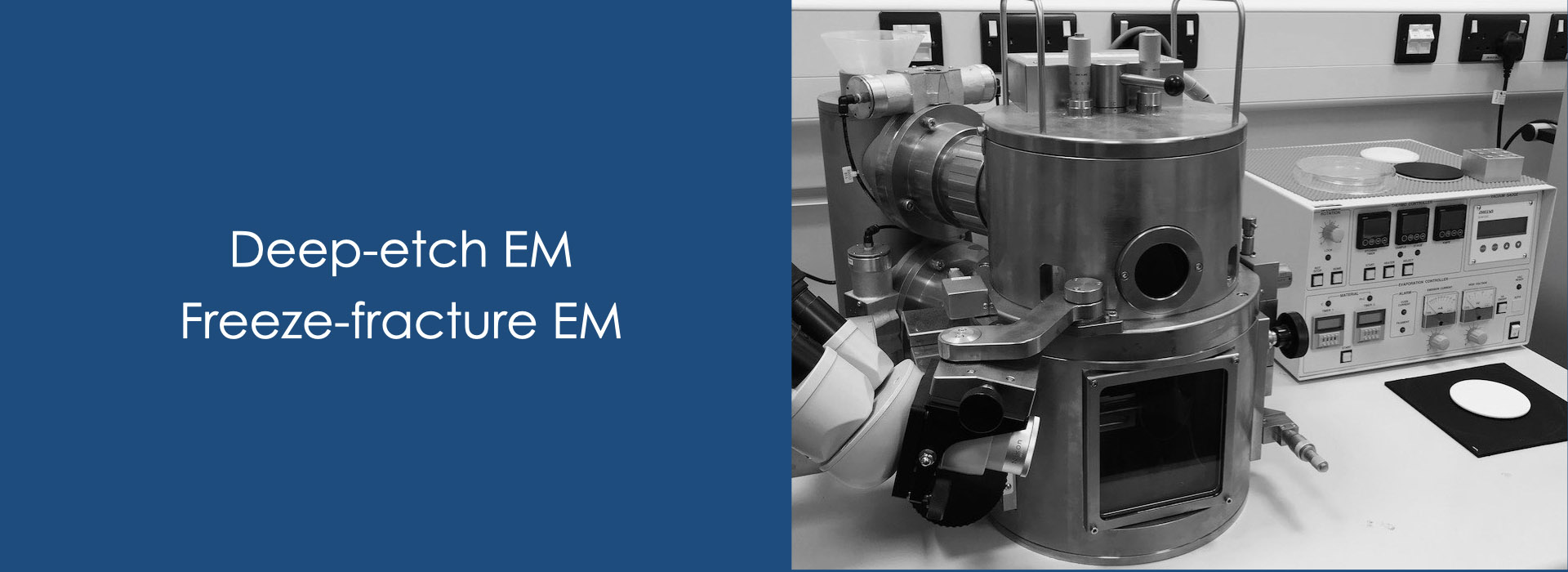Deep-etch, or freeze-fracture EM for plasma membrane (membrane skeletons, clathrin-coats, caveolae), other membrane compartments, and cytoskeletal organizations [under construction].
Workflow for Deep-etch EM:
- Culture tissue cells on small glass coverslips
- Wash with Mammalian Ringer solution (155 mM NaCl, 3 mM KCl, 2 mM CaCl2, 1 mM MgCl2, 3 mM NaH2PO4, 5 mM HEPES brought to pH7.4 with NaOH, plus 10 mM glucose) or Hank’s balanced salt solution
- Treat with medium molecular weight poly-L-lysine in the Ringer solution
- Unroof the plasma membrane by ultra-gentle sonication
- Chemical fixation with half-strength Karnovsky solution (2% paraformaldehyde - 2.5% glutaraldehyde) in KHMgE buffer (30 mM HEPES buffer brought to pH7.4 with KOH, 70 mM KCL present to make it roughly isotonic to the intracellular milieu, 5 mM MgCl2, 3 mM EGTA present to eliminate calcium)
- Wash with KHMgE buffer and Rinse with pure water
- Rapid freeze with pure copper metal cooled in liquid helium
- Deep etch at minus 90-80°C
- Rotary shadow at 22° with pure platinum and carbon
- Wash with hydrofluoric acid and pure water (including Kodak Photo-Flo 200)
- Mount on the carbon-coated Formvar grid
- TEM imaging
Workflow for Freeze-fracture EM:
- Culture tissue cells on small glass coverslips
- Rapid freeze with pure copper metal cooled in liquid helium
- Freeze fracture at minus 103°C
- Rotary shadow at 22 with pure platinum and pure carbon
- Wash with hydrofluoric acid and pure water (including Photo-Flo 200)
- Mount on the carbon-coated Formvar grid
- TEM imaging
*Leica freeze-fracture system (Ø4.6 x 0.6 mm)
Immune-gold labelling options:
- SDS-FRIL (SDS-digested freeze fracture replica immunogold labelling)
- DRIL (Deep-etch replica immunogold labelling


